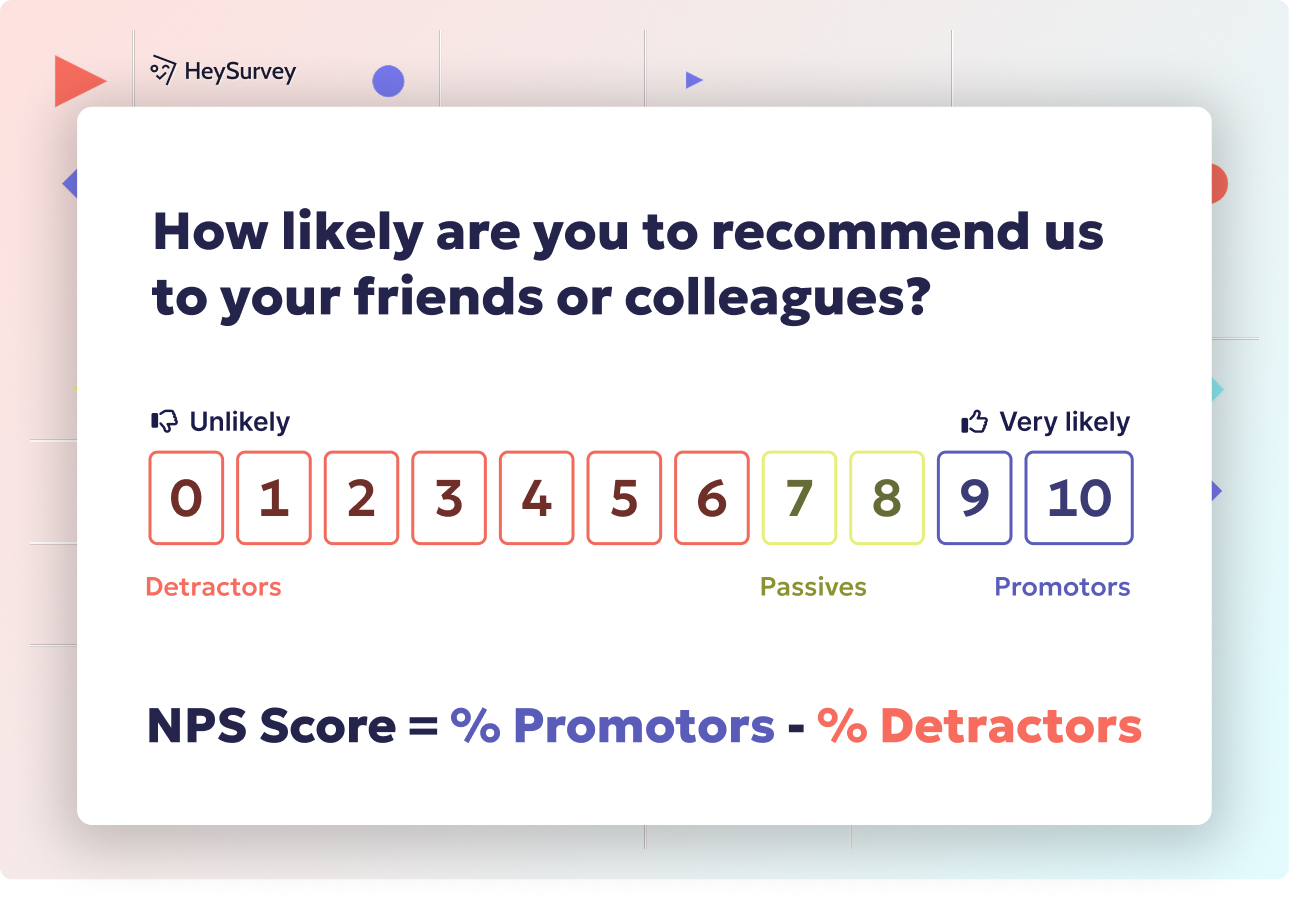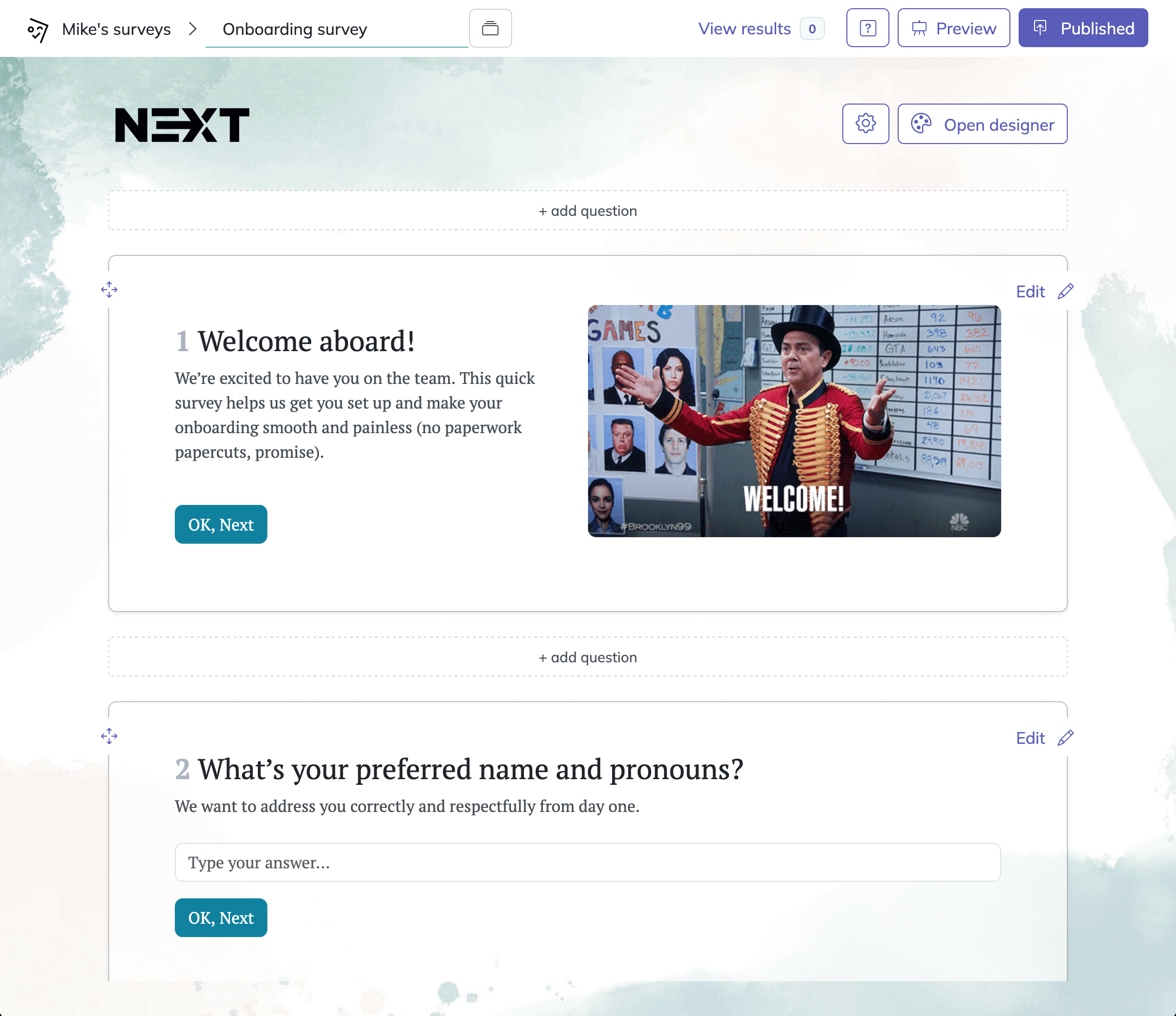29 Interval Survey Questions: How, When & Why to Use Them
Explore interval survey questions with 30+ sample questions across customer satisfaction, employee engagement, product feedback, and more for precise insights.
Interval survey questions are the Swiss Army knife of measurement tools—versatile, precise, and capable of capturing the subtle shades between “meh” and “marvelous.” With their equal-distance response options and no true zero, they let you explore the rich landscape of feelings, attitudes, and frequency far deeper than a bland “yes/no” query ever could. Curious how they compare to ordinal or ratio scales, or why data nerds absolutely love them for analyzing satisfaction, sentiment, and more? Keep reading, because we’ll dive into customer satisfaction, employee engagement, product feedback, market research, healthcare, academic studies, and expose all the best practices for crafting interval questions that work wonders.
Introduction to Interval Survey Questions
What Is an Interval Survey Question?
An interval survey question measures responses across a numerical scale where the difference between points is always equal. Imagine a scale from 1 to 7—each step is as wide as the next, but there’s no absolute zero. This is key: unlike ratio scales, you can’t say “twice as much,” but you can confidently measure the gap from “not at all satisfied” to “extremely satisfied.”
Interval vs. Nominal, Ordinal, and Ratio Questions
Let’s quickly compare:
- Nominal questions—purely names or categories, like “Which fruit do you like?” (apple, banana, cherry)
- Ordinal questions—ranked order, but distances aren’t equal; think “first, second, third”
- Interval questions—equal gaps, no true zero, perfect for attitudes or levels (1 = strongly disagree, 7 = strongly agree)
- Ratio questions—like interval, but with a meaningful zero (height, weight, income)
The interval scale definition highlights its unique spot in this lineup.
Why Interval Questions Shine
Why are interval questions so popular? Because they let you measure intensity—how strongly someone feels, how often a behavior happens, or how much a perception varies. This is incredibly useful when you want more than a binary answer, but aren't asking people to count physical items.
Survey Types Preview
You’ll find interval questions in:
- Customer satisfaction surveys
- Employee engagement assessments
- Product feedback forms
- Market research and brand tracker studies
- Healthcare and patient experience evaluations
- Academic and psychological research instruments
Ready to see how they work their magic in each of these areas? Let’s go!
Regular, short-interval surveys (weekly to monthly) effectively capture employee satisfaction trends, preventing outdated data and enhancing response rates. (support.teamecho.com)
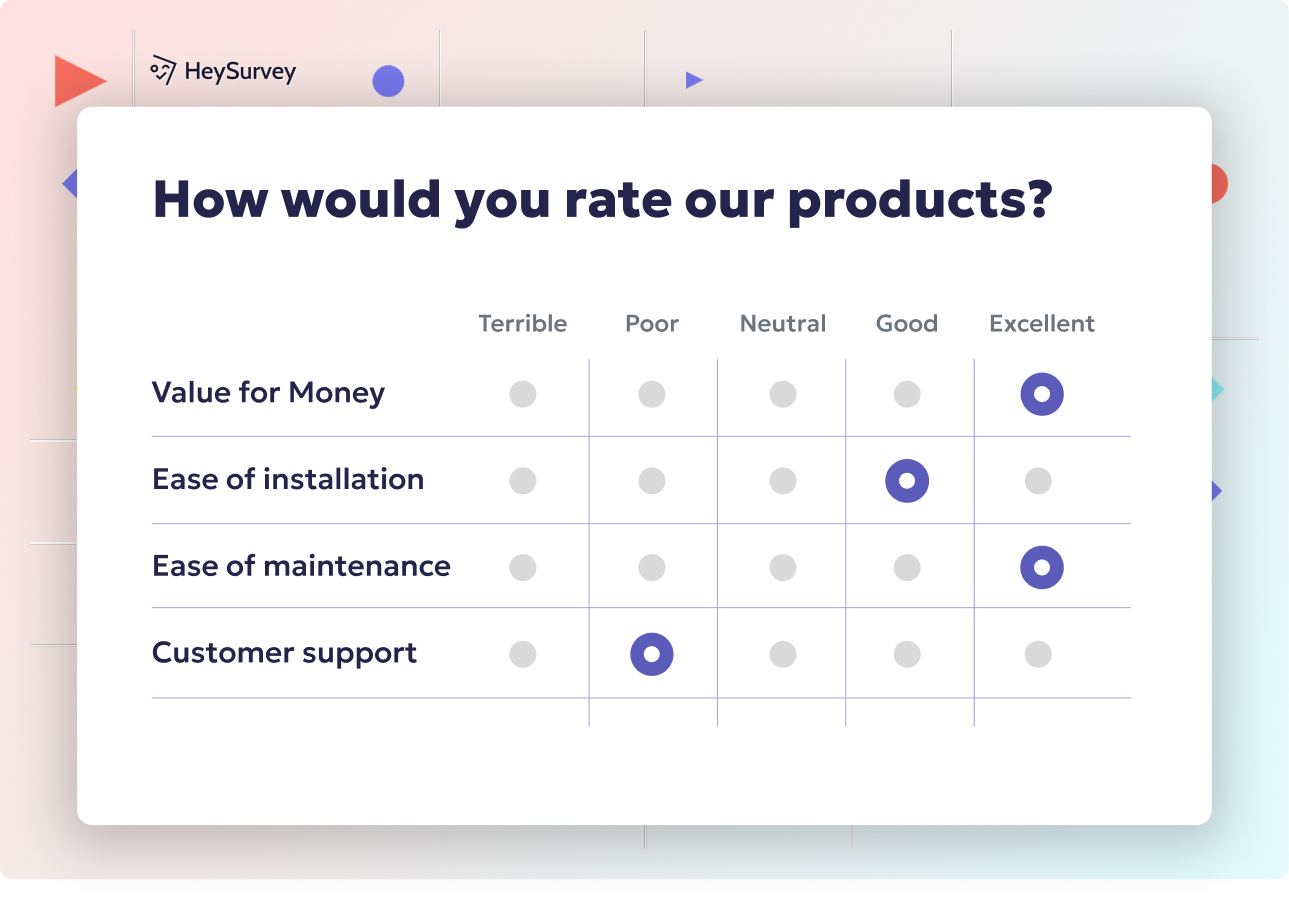
How to Create an Interval Survey with HeySurvey in 3 Easy Steps
If you’re brand-new to HeySurvey and excited to build a survey with those powerful interval questions, you’re in the right place. Let’s walk you through the process in three simple steps—plus a couple of bonus tips to make your survey uniquely yours!
Step 1: Create a New Survey
- Log in or start fresh at HeySurvey. You can even kick off survey creation without an account to get a feel for the platform.
- Choose a Pre-built Template if you want a fast start. It comes with useful question examples already waiting for you. Or, select an Empty Sheet if you’re feeling creative and want to craft everything from scratch.
- Once chosen, the Survey Editor will open, ready for your magic touch! Here, you can rename your survey for easy organization.
Step 2: Add Your Interval Questions
- Click the Add Question button, which you’ll find at the top or between existing questions.
- Select the Scale question type for your interval scale questions—perfect for those 1 to 7 or 1 to 5 rating options.
- Enter your question text, including clear labels for your numeric scale’s endpoints and midpoint, like “1 = not at all satisfied” and “7 = extremely satisfied.”
- Mark questions as required if you need to ensure respondents answer them before moving on.
- Use the handy options to add images or descriptions if you want to spice things up or clarify your question.
Step 3: Publish Your Survey
- Once your questions are set, hit the Preview button to see how your survey looks from your respondent’s perspective—nice and polished, right?
- If you love it, click Publish to make your survey live. You’ll get a shareable link to send out—or you can embed your survey directly into your website!
- Remember, publishing requires an account so you can track and analyze the responses later.
Bonus Step 1: Apply Your Branding
- Customize your survey by adding your logo at the top left corner through the Branding options.
- Use the Designer Sidebar to tweak colors, fonts, backgrounds, and layouts so your survey reflects your style or company identity perfectly.
Bonus Step 2: Define Survey Settings or Branching
- Go to the Settings Panel to set start and end dates, limit the number of responses, or specify where users land after completing the survey (Redirect URL).
- If you want a more personalized journey, use Branching to send respondents down different paths depending on their answers—no more one-size-fits-all!
Feeling ready? Go ahead and open a template with the button below to jumpstart your interval question survey creation on HeySurvey. Your insights await!
Customer Satisfaction Surveys with Interval Questions
Why and When to Use This Survey Type
Customer satisfaction is so much more than a “yes” or “no” to “Are you happy?” With a customer satisfaction interval scale, you can dig into the depth of delight—or dismay—behind each experience. These questions are:
- Perfect for measuring post-purchase satisfaction.
- Great for follow-ups after support interactions or onboarding sessions.
- Highly effective at regular checkpoints, such as NPS (Net Promoter Score) surveys.
Using interval questions in CSAT (Customer Satisfaction) surveys reveals not only “how many” customers are satisfied, but how satisfied they actually are. It uncovers the nuance within “neutral”—are customers slightly pleased, or teetering on the edge of discontent?
Five Sample Interval Questions for Customer Satisfaction
- On a scale from 1 to 7, how satisfied are you with your recent purchase experience?
- Rate the speed of service where 1 = extremely slow and 7 = extremely fast.
- How likely are you to repurchase in the next 3 months? 1 = not at all likely, 7 = extremely likely.
- How confident are you that our product met your expectations? 1–7
- Please rate our live-chat support professionalism (1 = very unprofessional, 7 = very professional).
Semantic-rich descriptors, such as extremely satisfied or neutral, add context and clarity, ensuring everyone’s on the same metaphorical page. Using these CSAT interval questions regularly lets companies track improvements or detect issues before they escalate.
Benefits and Applications
Interval questions aren’t just about precision; they enable you to:
- Spot subtle shifts in satisfaction levels over time.
- Drill into which touchpoints drive delight or disappointment.
- Analyze results with averages and standard deviations to make smarter decisions.
So, next time you consider a yes/no question, swap in a 1–7 scale and watch insights multiply!
Interval scales in customer satisfaction surveys enable precise statistical analyses, such as means and standard deviations, by quantifying differences between responses. (tlfresearch.com)
Employee Engagement Surveys with Interval Questions
Why and When to Use
Employee engagement surveys should capture nuanced sentiment, not force employees into boxes. With a 1–7 interval scale, staff can shade their true feelings—maybe they’re “slightly” motivated, or “almost” see a career path, instead of simply picking agree/disagree.
These questions are a must when:
- Running annual or bi-annual engagement pulses.
- Assessing the mood after an organizational shake-up (mergers, new leadership, big changes).
- Evaluating perceptions of culture, communication, and career growth.
Using interval questions, you’ll see where employees cluster, if attitudes shift, and where to intervene for the greatest impact.
Five Sample Interval Questions for Employee Engagement
- On a 1–7 scale, how valued do you feel at work?
- Rate your agreement: “I see a clear path for career growth here.” 1 = strongly disagree, 7 = strongly agree.
- How motivated do you feel on an average workday? 1–7
- Rate the effectiveness of internal communication (1 = very ineffective, 7 = very effective).
- How well does your role align with your skills? 1–7
With each employee engagement interval scale, you unlock the power to measure subtle changes—did a recent initiative push motivation from “meh” to “pretty good”? You’ll know!
Advantages of Interval Data in the Workplace
By using interval data:
- Track sentiment trends among teams or locations.
- Pinpoint where interventions can boost morale or growth.
- Quantify engagement so leaders can act on real insights.
In short: interval questions help move beyond the extremes to see what's bubbling up in the middle—which, in organizations, is where the real story often lies.
Product Feedback Surveys with Interval Questions
Why and When to Use
When you release a new feature, you want to know if it lands with a splash or a splat. Pinpointing feature-level performance is where interval questions become truly magical.
They’re incredibly useful for:
- Collecting feedback after beta releases, early access, or demos.
- Gauging user impressions following new feature launches.
- Regular product health check-ins after updates or bug fixes.
Instead of just “did you like it?”, you get data about how much or how little each aspect wowed or worried users.
Five Sample Interval Questions for Product Feedback
- Rate the ease of use of the new dashboard (1 = very difficult, 7 = very easy).
- How visually appealing is our interface? 1–7
- On a 1–7 scale, how intuitive was the onboarding tutorial?
- How important is the export feature to your workflow? 1 = not important, 7 = mission critical
- Rate overall product reliability (1 = very unreliable, 7 = very reliable).
Notice how every product feedback interval question hones in on a specific aspect. This granularity makes reporting a breeze and improvements targeted rather than scattershot.
Why Interval Scales Excel in Product Feedback
With well-written interval questions, you can:
- Compare multiple features side-by-side with meaningful averages.
- Identify which weak spot hurts user experience most.
- See what “good enough” means to your audience—maybe “5/7” is the new perfect!
The result? Product teams get clear priorities, designers get direct guidance, and customers feel heard.
Interval scales, by providing equal intervals between response options, enable precise measurement of user satisfaction and facilitate meaningful statistical analysis in product feedback surveys. (surveymonkey.com)
Market Research & Brand Perception Surveys with Interval Questions
Why and When to Use
Market researchers and brand managers love interval scales because they transform abstract perceptions into chartable, trackable data. Want to see if Brand X is “slightly more trusted” than Brand Y? An interval question has your answer.
They’re indispensable for:
- Benchmarking your brand against competitors.
- Tracking shifts in awareness or sentiment after campaigns.
- Repeating measurements at regular intervals (quarterly, post-rebranding, after a PR event).
Analyzing brand perception is a numbers game, and interval data makes those numbers meaningful.
Five Sample Interval Questions for Market Research
- How familiar are you with Brand X? 1 = not at all familiar, 7 = extremely familiar
- Rate the trustworthiness of Brand X 1–7
- On a 1–7 scale, how innovative do you consider Brand X?
- How likely would you be to recommend Brand X to a friend? 1–7
- Rate Brand X’s value for money compared to others (1 = much worse, 7 = much better).
Each market research interval question turns guesswork into actionable insights.
Advantages for Brands
Interval questions help you:
- Quantify movements (is trust up by two points? Is innovation lagging?).
- Track changes pre- and post-campaign with precise numbers.
- Spot outliers and averages in audience perception for targeted brand strategy.
If you want more than hype—if you want to see if hype turns into habit—interval scales are your best friend.
Healthcare & Patient Experience Surveys with Interval Questions
Why and When to Use
Healthcare is personal, and the experience can’t be boiled down to a binary. For clinics, hospitals, and telehealth providers, interval scales help quantify the unquantifiable: comfort, clarity, confidence, or even pain.
The best times to use these are:
- Immediately after patient visits or virtual care sessions.
- Following discharge from a procedure or hospital stay.
- In regular follow-ups tracking recovery or health outcomes.
Here, interval questions turn feelings and perceptions into actionable, patient-centered data.
Five Sample Interval Questions for Patient Experience
- Rate the clarity of explanations given by your provider 1–7
- On a scale of 1–7, how comfortable were the facilities?
- How well were your privacy concerns addressed? 1 = not at all, 7 = completely
- Rate pain relief effectiveness after treatment 1–7
- How confident are you in following the prescribed care plan? 1–7
These patient experience interval questions capture detail that’s lost in basic “Did you feel comfortable?” binary forms.
Practical Benefits in Healthcare
With interval data, healthcare organizations can:
- Pinpoint pain points (was “5/7” on comfort mostly due to temperature or noise?).
- Measure improvement over time as changes are implemented.
- Show compliance and quality metrics for accreditation—using robust data, not anecdotes.
Interval survey questions help bridge the gap between subjective experience and tangible improvement in the healthcare sphere.
Academic & Psychological Research Surveys with Interval Questions
Why and When to Use
Psychologists and academic researchers are obsessed with measuring what can’t be seen: attitudes, anxiety, self-esteem, curiosity, and more. Interval scales (especially Likert-type questions) make this possible.
Commonly used for:
- Gathering baseline measurements at the start of studies.
- Tracking changes after interventions or over time (longitudinal studies).
- Adopting validated scales—like the Likert or Semantic Differential—for trusted comparisons across populations.
Interval scales allow for nuanced analysis, such as regression, mean and SD calculations, or correlational studies.
Five Sample Interval Questions in Academic Contexts
- On a scale from 1 (strongly disagree) to 7 (strongly agree), I feel confident in social situations.
- Rate your current stress level (1 = very low, 7 = very high).
- How interested are you in political news? 1–7
- Rate the statement: “I find it easy to focus on tasks.” 1–7
- How optimistic are you about your future career? 1–7
Each of these Likert-type interval questions allows participants to express subtle differences in attitude.
Benefits in Research Design and Analysis
In academic research, interval survey questions:
- Allow for hypothesis testing using robust statistical methods.
- Provide more granularity than simple agree/disagree answers.
- Help uncover patterns and relationships that inform theory and practice.
Whether testing new programs or measuring mental health progress, interval questions are foundational in the social sciences.
Best Practices: Dos and Don’ts for Crafting Effective Interval Questions
Dos for Writing Strong Interval Questions
There’s an art and a science to crafting interval questions that yield usable, trustworthy data. Stick with these key dos:
- Use balanced, equidistant anchors like 1–7, ensuring every respondent interprets the scale similarly.
- Provide clear verbal labels for endpoints (“very dissatisfied,” “very satisfied”)—and consider adding a midpoint (“neutral”).
- Randomize item order within sections to reduce bias from question order effects.
- Pre-test your scales on a small group to ensure clarity and reliability of every question.
Don’ts for Interval Question Design
Skip these all-too-common mistakes:
- Don’t use unequal intervals or labels that suggest some jumps are “bigger” than others.
- Never skip numerical points, which can introduce confusion or invalidate your averages.
- Avoid overloading any survey with walls of interval questions; mix in free text, multiple choice, or ranking items for balance.
- Watch for double-barreled items—never combine two ideas in one question (e.g., “How satisfied are you with our speed and quality?”).
- Don’t forget to analyze the mean, standard deviation, and overall distribution to spot skewness (are most answers clustered at one end?).
Crafting Likert-Type Questions and Steady Scales
Follow these intervals scale best practices:
- Phrase each question simply and directly—no jargon, no ambiguity.
- Ensure endpoints are clearly stated and unambiguous.
- Decide on a consistent scale length (5-point vs. 7-point) and stick with it per survey.
- Maintain logical flow, but test for order effects.
- After collection, analyze results not just by averages but also by the shape of the response curve, which tells you if improvement is linear or lumpy.
You’ll be amazed how a little polish here leads to infinitely better results down the line!
Conclusion and Next Steps
Interval survey questions light up the hidden contours of attitudes, satisfaction, and experience in ways that simple categories can’t. Their ability to measure intensity and variation makes them indispensable for customer feedback, workplace insights, healthcare quality improvement, market research, and academic studies. Try experimenting with both 5-point and 7-point scales to find your sweet spot. Ready to transform your research? Start building your own interval survey with a free template and dive deeper into the art of designing great questions—especially ordinal and ratio ones for comparison. Happy surveying!
Related Question Design Surveys

29 Quantitative Survey Research Questions Example for Success
Explore 25+ quantitative survey research questions example with clear explanations and tips for c...
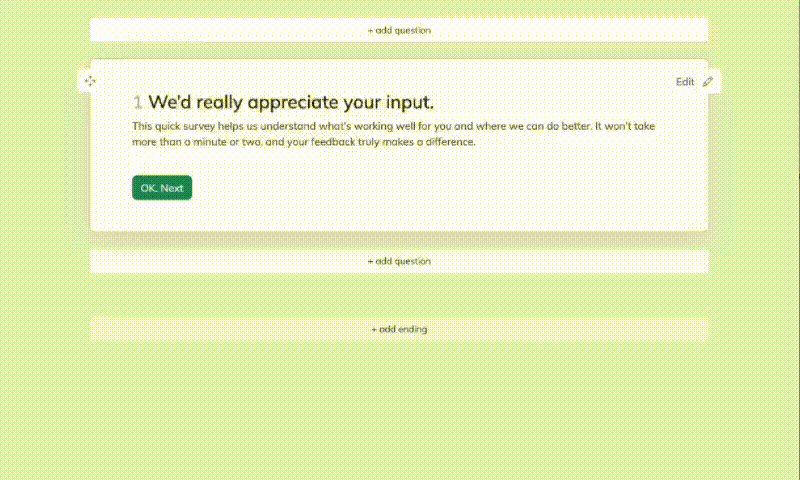
32 Good Survey Question to Boost Your Data Quality
Discover how to craft good survey questions with 30 sample questions across 8 types for better da...
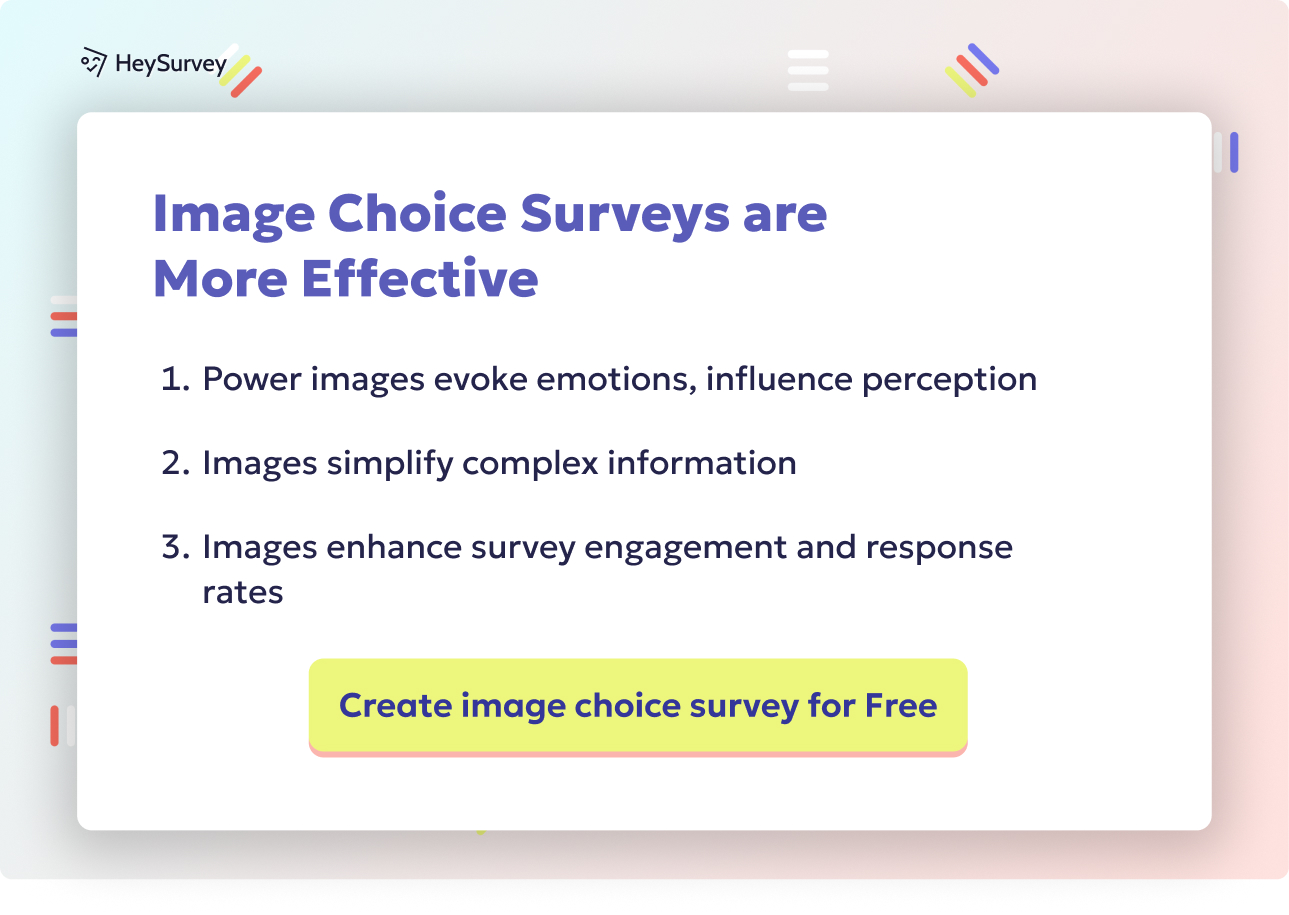
31 Survey Question Mistakes You Need to Avoid Today
Discover 25 common survey questions mistakes with real examples and expert tips to craft clear, u...
